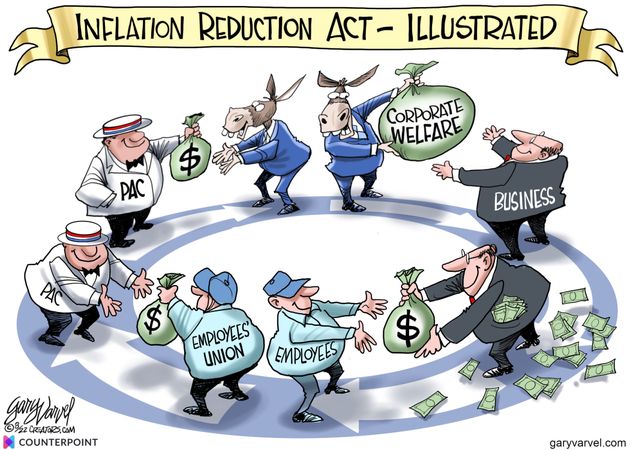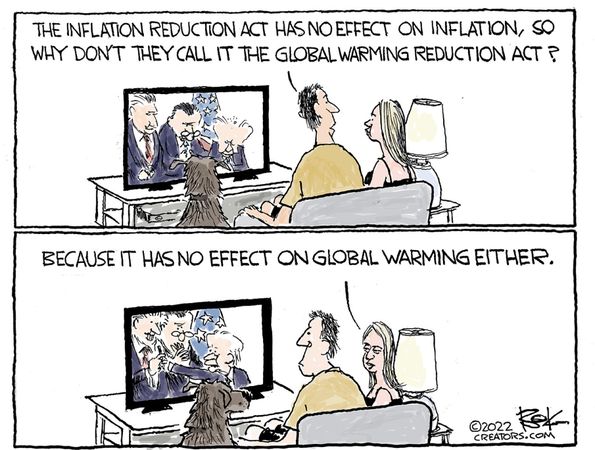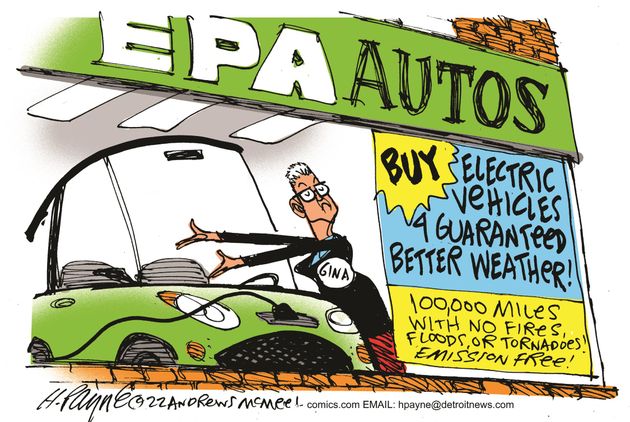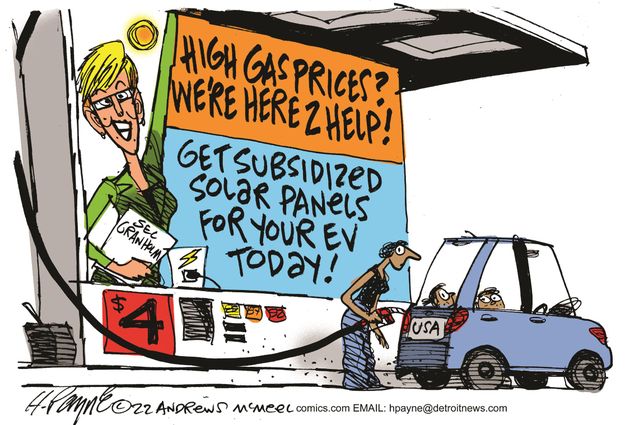Bonner Cohen reveals land mines and pitfalls in the just signed climate law, the so-called Inflation Reduction Act. Converting the US auto fleet to Electric Vehicles (EVs) just got much harder, not to say impossible. His Daily Caller article is Why Democrats’ Road to EV Utopia Got a Whole Lot Bumpier. Excerpts in italics with my bolds.
Aside from the new taxes, handouts to the well-connected, and price controls on certain pharmaceuticals, the bill’s “climate” provisions contain a slew of incentives crafted to promote electric vehicles (EVs). But the Byzantine structure lawmakers erected to govern the transition to the EV green utopia guarantees that things will get a lot bumpier than Bette Davis’s character could ever have imagined.

Let’s start with the handouts to the EV industry. U.S. taxpayers have been subsidizing the purchase of EVs for years. Under the new law, those subsidies will be extended through 2032. But only EVs below a certain price will qualify for the tax credits, and only buyers whose income is below a certain level will be eligible to take advantage of them.

Before the new law took effect, buyers could receive tax credits of up to $7,500 only if an automaker had sold fewer than 200,000 EVs, a threshold Tesla and General Motors crossed years ago, and one that other manufacturers are rapidly approaching. Now, only new electric-powered SUVs, vans and trucks that cost less than $80,000 qualify for up to $7.500 in tax credits.
EVs eligible for the tax credits, however, must be assembled in North America and their battery components must come from the U.S. or a handful of friendly nations. And, by 2029, the law stipulates that 100% of battery components are to come from North America. This is where life gets interesting.
Geopolitical Consequences
“Today’s battery and mineral supply chains revolve around China,’ the International Energy Agency (IEA) reported in July. “China produces three-quarters of all lithium-ion batteries and is home to 70% of production capacity for cathodes and 85% of anodes (both are key components of batteries). Over half of lithium, cobalt, and graphite processing and refining capacity is located in China.”
IEA projects that the global market for lithium will grow more than 40-fold by 2040, with demand for nickel, cobalt and graphite likely to be 25-times higher than it is today. Russia is home to about a fifth of the world’s high-grade nickel — a substance coveted by EV manufacturers for extending the range and power of batteries.
In other words, the raw materials essential to the EV transition are largely under the control of America’s geopolitical rivals. China and Russia are also the chief beneficiaries of the soaring costs of the commodities essential to power EVs. But the Schumer-Manchin bill seeks to shift the source of EV battery components to the U.S. or its allies.

Is this realistic? There is only one nickel mine in the U.S., and that Michigan operation is set to close in 2025. Two lithium mines have been proposed in Nevada, but they are encountering fierce resistance from tribal and environmental groups. On average, it takes 12 years for a mining project in the U.S. to clear all the permitting red tape and litigation before it can go into operation. Many projects never come to fruition.
As commodity prices increase, the prices of EVs — already higher than conventionally-powered vehicles — will rise accordingly. Most automakers have already announced plans to cease production of gas-powered vehicles by the middle of the next decade. They, too, will become more expensive as their numbers dwindle. Consumers, being force-fed EVs by government and automakers, will have to dig deeper and deeper.
The disruptions will go far beyond what people will have to pay for personal transportation. Ford just announced it is laying off 3,000 white-collar employees as part of the company’s transition to EVs. Blue-collar workers at Ford, and other automakers, will follow, because it takes fewer workers to assemble an EV (fewer parts) than a conventional vehicle.
Squeeze Play
Furthermore, the vast number of wind farms and solar arrays the Biden administration is planning for the country will require an enormous number of batteries to supply electricity when the sun doesn’t shine and the wind doesn’t blow. Those batteries will compete with EV batteries for the expensive raw materials they need to function, opening the door to shortages and higher costs.
The consumer of modest means will be caught in a squeeze play,
struggling to pay soaring power bills while trying to afford a new, or used, car.
“Even with the tax credits, EVs are impractical and unaffordable for most low-income households,” says Donna Jackson, director of membership development for Project 21, a network of black conservatives. “The real message to the poor and minority communities is take the bus.”
Indeed, the Democrats’ dystopian Inflation Reduction Act will only exacerbate America’s energy woes and cause incalculable hardship for those who can afford it least, low-income, minority families.

See Also West’s Obsession with EV Tech Puts China in World Driver Seat



Among the bumps in the road toward EV utopic is that there is no basis in logic or in science for governmental subsidization of purchases of EVs. The appearance of such a basis is created by an application of the Fallacy of Misplaced Concreteness under which an “abstract” event of the future is mistaken for a “concrete” event of the future by the argument made by a modern climate model where an “abstract” event of the future lacks a location in space and time while a “concrete” event of the future has such a location. The effect from application of the above referenced fallacy is for the illusion to be created that the runs of a modern climate model convey information gain to a regulatory official though these runs convey no such information to this official. Consequently, regulation of Earth’s climate system seems possible but this is only an illusion.i.
LikeLike
Apparently, the Administration’s comments that they are fixing the supply chain is false. Most of the auto vehicle supply chain will move to China; and risk this brings!
LikeLike